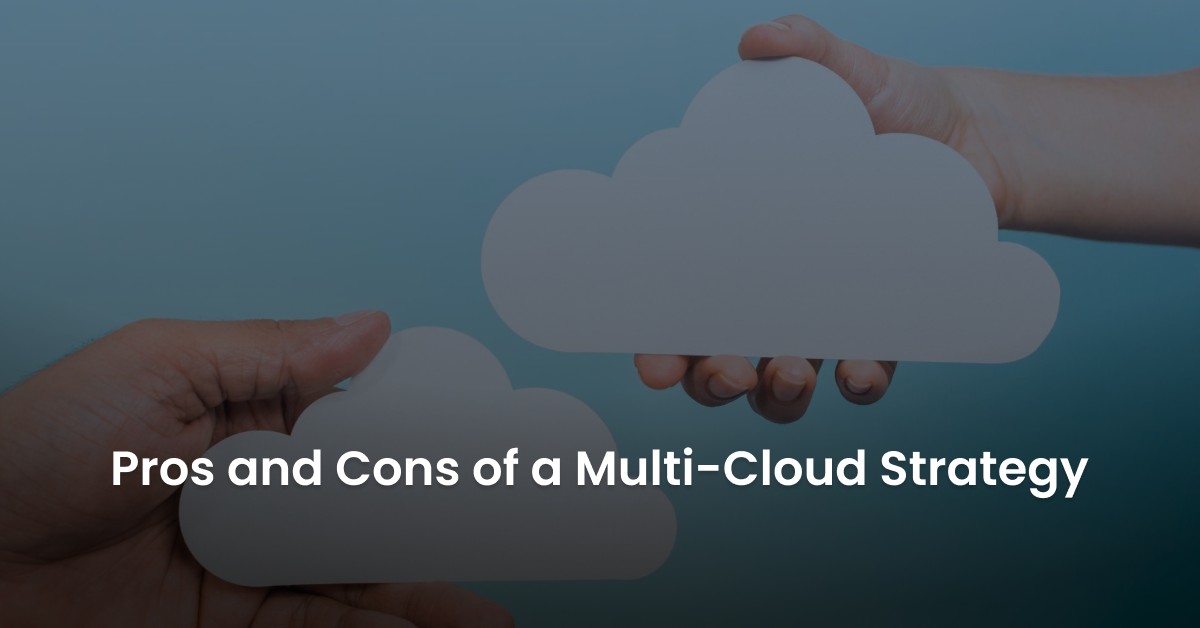We all know the benefits of running your IT on the cloud. Security, reliability, and high performance are a few perks of using cloud platforms. Each cloud provider offers you a reliable computing platform to run all your workloads.
Rather than using a single cloud platform, you can opt for multiple platforms, which designers call a multi-cloud strategy, where you can combine, AWS (Amazon Web Services) and Azure or AWS with a private cloud. A multi-cloud approach allows you to deliver services across public and private platforms consistently.
Most organizations are increasingly operating across multiple cloud platforms to find the best mix of performance and low costs. As a result, assessing the benefits and drawbacks of a multi-cloud strategy is ideal for helping users find the right approach.
Pros of a Multi-Cloud Strategy
Here is a look at the significant benefits of multi-cloud computing:
Avoid Vendor Lock-In
Everyone wants flexibility in choosing a business vendor, regardless of the type of company they are running. A single vendor creates the problem of limited flexibility. You tend to become highly dependent on the vendor’s prices and services in a way you can’t explore other options.
Designers call this problem vendor lock-in and can be bad for your business. You need more than one cloud platform such that you can change between vendors at any time. In case one platform is not available or is more expensive, you can choose the other option.
New Technologies
Cloud platforms continuously innovate to provide users with the cutting-edge technology they need to deliver excellent services. As such, it’s difficult to see what’s coming along in any cloud service. You need a multi-cloud presence to leverage the benefits of new technologies and services.
With a multi-cloud approach, you can always switch from one platform to another to explore a new, better-fitting technology.
Risk Mitigation
Cloud providers use multiple data centers across multiple geographic zones to deliver the computing platform. While these platforms are highly reliable, available, and secure, they aren’t 100% perfect. They often encounter downtimes and can lead to significant service disruptions.
A multi-cloud approach is a handy way to mitigate IT disasters and disruptions. It allows you to replicate your resources and workloads so that when one provider is down, your services still go on normally. This is important for businesses, because no business can afford to have an inconsistent digital presence.
Lower Costs
Each cloud platform prices differently. For instance, one cloud platform has lower storage pricing while the other can be cheaper in terms of network bandwidth.
A multi-cloud approach allows you to choose a combination of services with the most significant cost savings. Since most cloud platforms integrate with each other, finding a balance becomes relatively straightforward.
Cons of a Multi-Cloud Strategy
Multi-cloud provisioning is desirable in many ways. However, it still comes with some downsides. These include:
Huge Talent Needs
The amount of skill needed to run a multi-cloud platform is vast. You need technical staff who understand different cloud platforms seamlessly. Finding the perfect IT talent is often a challenge to many organizations, as most people tend to be proficient in only one cloud platform.
Talent is rarely transferable from one cloud platform to the other. Each cloud platform has different demands, infrastructure, security approach, applications, and technical aspects. Ideally, it’s not a plug-and-play world; you need real expertise.
In most cases, you will have to hire different people to perform a similar task. In addition, most cloud experts are in high demand, not to mention the high salaries you have to pay. Companies are looking to hire the most skilled cloud architects, even if that means snatching them from your company.
Therefore, you need a unique approach to run a multi-cloud enterprise. Be ready to pay lots of money and constant hiring at all times.
Difficult to Maintain Cloud Security Across Multiple Platforms
The cloud provides a secure way of running your IT. Each cloud platform is secure, but that can dwindle when running multi-cloud infrastructure.
Running multiple cloud platforms comes at a risk. Each platform has unique security configurations, and you have to get it right at all times. Profound attention to detail is a crucial yet overlooked aspect of multi-cloud computing.
You need to configure all security measures in place, such as data encryption, security groups, identity management, and more. Errors often arise because of the complex nature of cloud platforms.
The Bottom Line
You now have more information about the benefits and drawbacks of a multi-cloud platform. Being aware of these pros and cons helps you approach it with an open mind. All you need to ensure is to have the best cloud architects for your preferred cloud platforms.
At nOps, we help organizations run secure, reliable, and efficient AWS and Azure cloud. nOps allows you to gain visibility over your multi-cloud environment so you can run it efficiently.
Start your nOps free trial or schedule a demo to see it in action!



